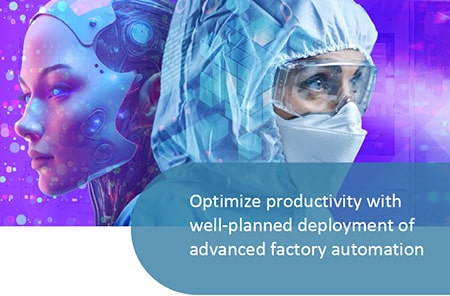Often in the industry, we get preoccupied with buzzwords like big data, digital twin, AI, and ML and we misinterpret these topics as goals to achieve. The real goal is to enhance factory performance. Depending on the source of the issue, there are various KPIs to focus on that help drive improved factory performance. These include how much time does it take to detect a problem, how will a decision impact production quality (Figure 1), and what is the cost of these events?
The ease of improving these metrics, as well as the ceiling to expand them, is directly linked to the way systems are implemented at a foundational level.
Siloed work environments
With that in mind, we need to first look at legacy practices for assessing equipment and process health in a factory. Often events are assessed in silos based on their domains, with equipment being the domain of the FDC engineer. When there is a FDC event, the FDC engineer analyzes tool data to recommend a resolution to the problem. The SPC engineer’s domain is the substrate. When there’s a SPC event, this person reviews metrology charts to prescribe action. Hopefully, they talk to each other, but that’s not typically the case. Being able to assess across domains requires a high cost which is realized through throughput, impact on product quality, and capital investment.
Unifying the SPC and FDC functions
- A standardized data structure, which is critical for advanced analysis and AI/ML applications
- Shared tools to help standardize our action and reaction to events
- A consistent UI which provides the same look and feel across applications
- Universal management to streamline the administration of the applications
- A standardized knowledge base that enables us to reuse expertise and lower the overall investment
- Architecture designed to scale as factories grow
Enabling process optimization
Conclusion
FAQs
What is the primary goal of unifying process control in a factory?
What are some key performance indicators (KPIs) that can help drive improved factory performance?
KPIs include the time it takes to detect a problem, the impact of decisions on production quality, and the cost associated with events.
Why is it important to look beyond buzzwords like big data, digital twin, AI, and ML in the context of factory performance enhancement?
Buzzwords can be misleading, and it’s essential to focus on practical ways to improve performance.
How do legacy practices in assessing equipment and process health in a factory impact performance improvement?
Legacy practices often lead to assessments in isolated domains, creating challenges in communication and a high cost for assessing issues.
What are the domains typically involved in process control, and why is siloed assessment problematic?
Domains include equipment (FDC engineer) and substrate (SPC engineer). Siloed assessment can hinder communication and increase costs.
What are the key requirements for unifying process control functions effectively?
How does the integration of process control domains reduce costs and improve performance?
Integration reduces costs by streamlining assessments and communication across domains, leading to better analysis, faster event detection, and proactive decision-making.


